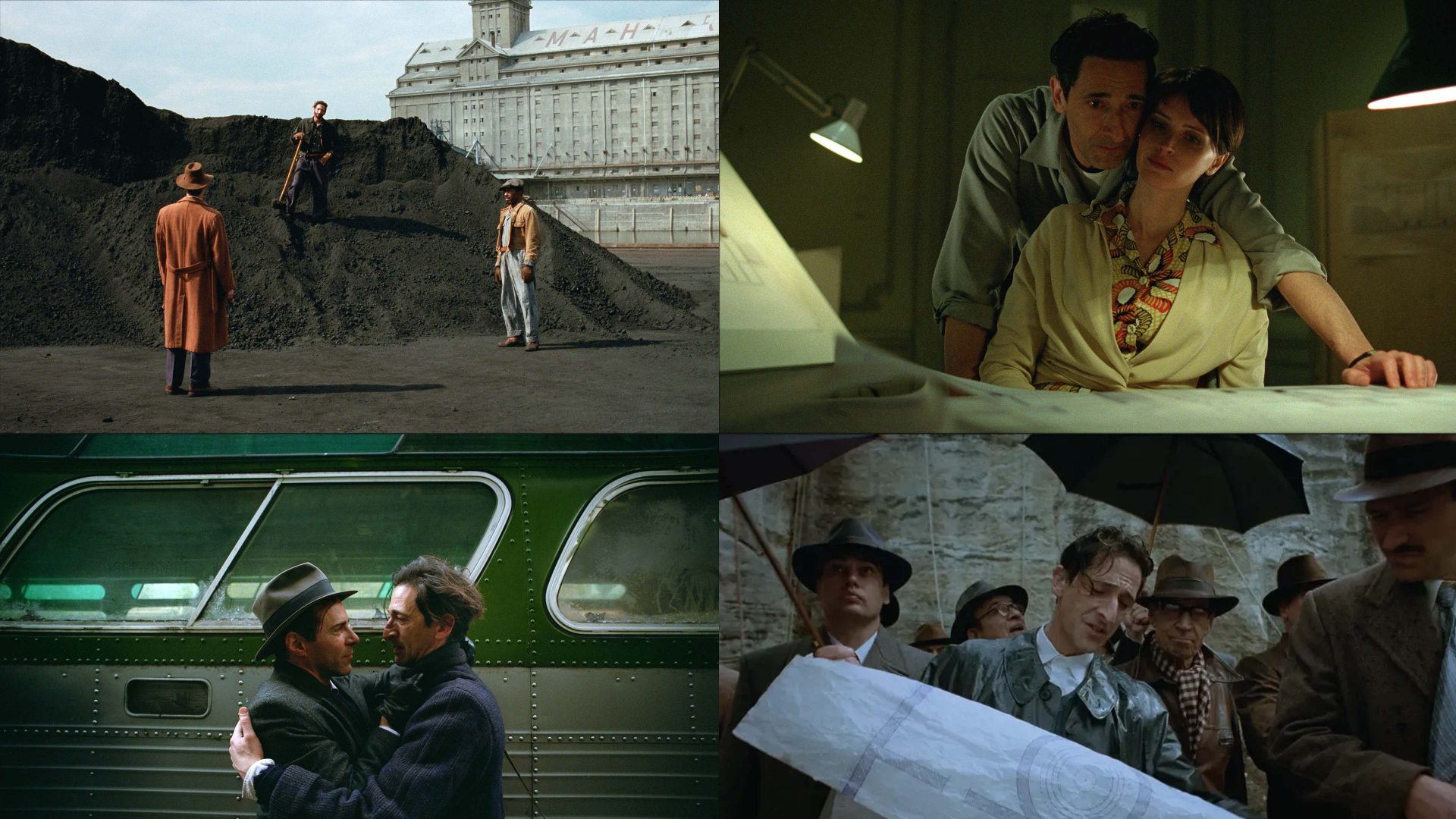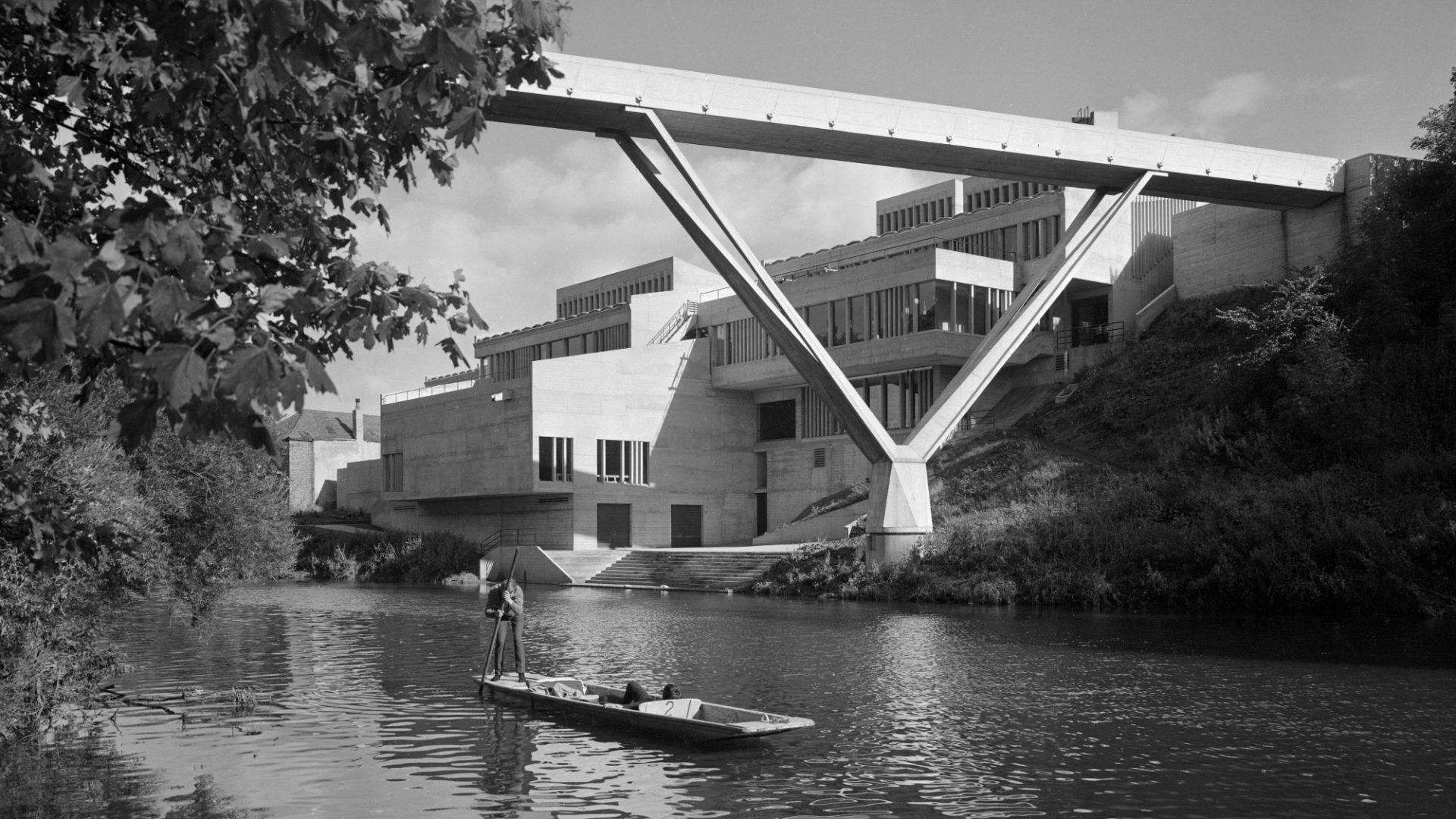There is a subtle but profound connection between the movie that won the Oscar for Best Picture last year and the movie that should win on March 2.
In Christopher Nolan’s Oppenheimer, Cillian Murphy, in the title role, tells Matt Damon’s Colonel Leslie Groves that the Manhattan Project has a fair chance of beating Germany in the race to develop an atomic bomb, because the Nazis despise quantum physics as “Jewish science”.
Likewise: in Brady Corbet’s masterly epic, The Brutalist, László Tóth (Adrien Brody), a Hungarian Holocaust survivor, explains to his prospective patron, Harrison Lee Van Buren (Guy Pearce), that he trained as an architect at the Bauhaus in Dessau, but that “the Reich rejected myself and my colleagues for our type of work, for it was deemed not Germanic in character”.
Founded in 1919 by Walter Gropius in Weimar, the Bauhaus school developed a modernist aesthetic that sought to marry the artist’s vision with the techniques and materials of mass production. The movement embraced minimalism, unadorned geometric designs and functional structures intended for the masses.
This was despised by the Nazis as “degenerate art”, “cosmopolitan modernism” and a Jewish menace to Teutonic values. The school moved to Dessau in 1925 and finally to Berlin-Steglitz in 1932, before its closure the following year.
Yet, as Corbet shows to triumphant effect, the spirit of Bauhaus lived on, not least in the brutalist style from which the movie takes its title: a form of architecture that revelled in the use of concrete, steel and bare brick, and, in its ambition to create a new built environment upon the ashes of the war, renounced any form of aesthetic nostalgia.
That a 215-minute movie about architecture – with an intermission – should have scooped up 10 Academy Award nominations is quite something. Yet The Brutalist is about so much more; the depiction of construction, obsessive artistry and the complex relationship between creator and patron being, as Corbet has observed, “the right visual allegory” for the film’s many themes; some of which are rich in contemporary resonance.
The director describes his film as a “mid-century melodrama”. But it is also a mountain range of the mind; a treasury of cinematic and literary allusions; and, to an unexpected extent, a vividly suggestive text for our times (fair warning: spoilers follow).
Rescued from the breadline by Harrison, a bluff industrialist who made his fortune making cargo ships during the war, László is commissioned to build a monumental edifice near his palatial home in rural Pennsylvania, in memory of his late mother. “Something boundless,” Harrison proclaims, “something new”.
With the architect installed in his guest house, he pulls strings to speed up the journey to America of his wife Erzsébet (Felicity Jones), and mute niece Zsófia (Raffey Cassidy). Confined to a wheelchair by painful osteoporosis brought on by malnutrition, Erzsébet grasps Harrison’s true nature sooner than her husband.
During a car journey, the preening industrialist explains to her that his interest in building is that of a collector: he loves first editions, butterflies, Portuguese Madeira. Now he has more than enough fine wine to last him a lifetime, so: “Out of the cellar and into the sky!” As Erzsébet warns László: “For him, it’s like refurbishing a kitchen.”
Pearce’s magnificent performance as Harrison captures perfectly the plutocrat’s pretensions, confusion of patronage and knowledge, and underlying philistinism. “So, answer me one question,” he asks. “Why architecture?”
László’s response is mischievously delphic. “Nothing can be of its own explanation – is there a better description of a cube than that of its construction?” He warms to his theme: “When the terrible recollections of what happened in Europe have ceased to humiliate us, I expect [my buildings] to serve instead as a political stimulus, sparking the upheavals that so frequently occur in the cycles of peoplehood”.
Given its primary subject and scale, The Brutalist has invited comparison with King Vidor’s great 1947 adaptation of Ayn Rand’s novel The Fountainhead (1943). And László certainly shares the monomania of Howard Roark (Gary Cooper), who is ready to dynamite his own building rather than see the original design compromised.
When Harrison hires a workaday architect to cut costs on the project, László savages the interloper: “Everything we see that is ugly – stupid, cruel and ugly. Everything is your fault”. He is ready to forgo his fee rather than modify his plan for the colossal structure.
Yet there the similarities between the two fictional characters end. Roark is a radical libertarian who frames history as an “ancient conflict… the individual against the collective”. László, in contrast, sees buildings as expressions of community that enshrine the spirit of progress and civilisation.
The broader question, though, is whether the community he hopes to serve will truly accept him. When he presents his design to the sceptical inhabitants of nearby Doylestown, he refers to anonymous questions “probing my personal background, heritage, and ideological persuasion”. He seeks to reassure them that “we will honour the traditions of Doylestown long established before I ever set foot here”. His intention is to build “a landmark which proclaims not only ‘I am new’, but ‘I am part of the new whole’”.
This “new whole” is what László hopes he and his family will find in America, a nation of immigrants. But are its borders truly porous, its towns genuinely inclusive? His cousin Attila (Alessandro Nivola) has converted to the Catholicism of his Connecticut-born wife Audrey (Emma Laird) and set up a furniture store in Philadelphia called “Miller & Sons”. László makes no such concessions, initially optimistic that what Emerson called “the smelting pot” of America will have space for a family of Jewish refugees.
By stages, he is disabused of this belief. Van Buren’s boorish son Harry (Joe Alwyn) is indifferent to the horrors that have deprived Zsófia of speech. “Your niece has made several of our guests very uncomfortable,” he tells László drunkenly.” Perhaps you should have a talk with her”.
When the architect bristles, Harry staggers off, turning to declare: “We tolerate you”. Therein lies one of the movie’s harshest disclosures: that the promise of America is underpinned by a basic hypocrisy; that the longer-established settlers’ acceptance of newcomers is entirely provisional and conditional.
This shard of reality could hardly be more topical. In the first fortnight of his second presidential term, Donald Trump has sought, at warp speed, to redefine what it is to be American. Not only has he declared a national emergency at the southern border and initiated the mass deportation of undocumented migrants. He has also challenged the US constitution’s protection of birth-right citizenship.
What lurks beneath this is one of the most powerful and menacing aspects of MAGA. At the Republican convention in Milwaukee in July, JD Vance, newly anointed as Trump’s running mate, said that “America is not just an idea. It is a group of people with a shared history and a common future. It is, in short, a nation”. He continued: “That is our homeland. People will not fight for abstractions, but they will fight for their home”.
Encoded in that speech was the true nature of “America First” in 2025: a definitive end to the presumptive role of the US as global policeman; a dramatic withdrawal of overseas aid; and – most pointedly – a notion of citizenship rooted in ancestry, blood and soil. Pressed last month on the nuances of deportation by Margaret Brennan on CBS’s Face the Nation, Vance was unequivocal: “I don’t really care, Margaret”.
Under Trump, nativism is now official policy; and The Brutalist reflects and foreshadows this bleak national trajectory. Disintegrating under pressure, László tells his wife: “The people here, they do not want us here… We are nothing. Worse than nothing”. Later, after a medical emergency, she concedes that he is right: “This place is rotten. The landscape. The food we eat. This whole country is rotten”.
Nowhere is that rottenness more apparent than in the vicious depths of Harrison’s soul. In a stunning sequence, he and László visit the marble quarries of Carrara in Tuscany, a place of primitive beauty that feels like the movie’s innermost psychic location. There, welcomed to a party hosted by local anarchists, Harrison finds László, long addicted to heroin, shooting up and in desperate shape.
What little remains of the mask falls. “It’s a shame seeing how your people treat themselves,” he sneers. “If you resent your persecution, why then do you make of yourself such an easy target? If you act as a loafer, living off handouts, a societal leech, how can you rightfully expect a different result? You have so much potential and yet you squander it”.
In a moment of shocking brutality, he scorns László without restraint. “Who do you think you are? You think you’re special?… Because you are educated? You’re a tramp. You’re a lady of the night”.
Thus does The Brutalist reveal its heart of darkness. Having survived Buchenwald, László is confronted by the horror that his mercurial patron thinks of him in much the same way as the Nazis did. There are no concentration camps in Pennsylvania. But Harrison still relishes the humiliation of his employee, the shame and degradation that he has suffered.
One is reminded of Primo Levi’s poem If This is a Man – also the title of his great 1958 memoir of Auschwitz: “Consider if this is a man/ Who works in the mud/ Who does not know peace/ Who fights for a scrap of bread/ Who dies because of a yes or no”. No less than an SS guard, Harrison denies László his humanity.
In an electrifying scene towards the end of the movie, Erzsébet denounces Harrison in front of his family. He replies that her husband is “a sick, senile old dog, and when dogs get sick, they often bite the hand that’s fed them, before someone mercifully puts them down”. In historical context, this glib reference to euthanasia is especially horrific.
The Brutalist was written by Corbet and his partner Mona Fastvold in 2017, long before the atrocities of October 7 and the terrible conflict in Gaza. It is absolutely not an encrypted polemic about Bibi Netanyahu or Hamas. But the idea of Israel courses through the plot.
In the first part, entitled “The Enigma of Arrival”, we hear the radio speech delivered by David Ben-Gurion, Israel’s founding prime minister, after the November 1947 vote by the United Nations to establish a Jewish state. On screen, sparks fly as László forges a modernist design. The juxtaposition is no accident.
Only when she announces that she and her husband Binyamin are to make “Aliyah” – the Hebrew word for migrating to Jerusalem – do we hear Zsófia, who is pregnant, finally speak. “Our repatriation is our liberation,” she tells her uncle and aunt. “I am Jewish. My child is Jewish. It’s time for us to go home”. László and Erzsébet are initially opposed. “Does it somehow make us less Jewish that we are here?” she asks her niece.
Yet, in the movie’s coda, set in the Israeli pavilion at the 1980 Architecture Biennale in Venice, Zsófia gives a speech on behalf of her ailing uncle, in which it is clear that Erzsébet ended her days in the Jewish homeland; it is at least suggested that László followed her.
The Van Buren Institute, we learn, was finally completed in 1973, and – the private significance of the design – incorporated spaces of the same dimensions as the cells at Dachau and Buchenwald, “save for one electrifying exception – when visitors looked 20 metres upwards, the dramatic heights of the glass above them invited free thought, freedom of identity”.
In a final irony, Harrison is revealed to have funded a monument to Jewish resilience. Zsófia recalls László telling her that “no matter what the others try and sell you, it is the destination, not the journey”.
By “destination”, she means Israel. But did her uncle? And does the director? It is one of the many strengths of this cinematic masterpiece that, in its multiple ambiguities, jagged edges, and hidden catacombs, it challenges the audience to make up its own mind.




